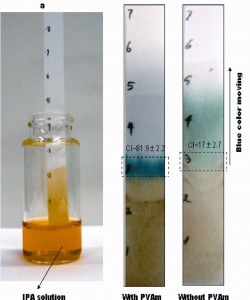02
Dec
Federal Legislation Introduced to Protect Children from Toxic Pesticide Use at Schools; New Study Documents State Progress in the Adoption of Safer School Pest Management Policies
(Beyond Pesticides, December 2, 2009) Cancer causing pesticides ”¦ endocrine disruptors ”¦ pesticides linked to neurological and immune system problems ”¦ asthma and learning disabilities. Federal legislation, the School Environment Protection Act of 2009, was introduced yesterday in Congress to protect children from toxic pesticides and pest problems with safer alternatives. The sponsors seek to end unnecessary toxic pesticide use in the nation’s schools, replacing it with safe management techniques and products.
When children attend school, it is assumed that they are going to a safe environment, free of toxic chemicals that could harm them. New legislation seeks to make this assumption a reality. With the introduction of the School Environment Protection Act of 2009 (SEPA), H.R. 4159, members of Congress and public health, school employee, children’s health and environmental groups are saying that it is time to stop the unnecessary use of dangerous chemicals and assist schools in the adoption of safer strategies to prevent and manage pest problems. U.S. Representative Rush Holt and 14 of his colleagues put the legislation forward with the foundation of more than a decade of state and local school pest management and pesticide use policies and on-the-ground experience from across the country.
SEPA requires that all public schools adopt integrated pest management (IPM) programs that emphasize non-chemical pest management strategies and only use defined least-toxic pesticides as a last resort. Least-toxic pesticides do not include pesticides that are carcinogens, reproductive and developmental toxicants, nervous and immune system poisons, endocrine disruptors, or have data gaps or missing information on health effects. Also excluded from the definition are outdoor pesticides that adversely affect wildlife, have high soil mobility, or are groundwater contaminants. The legislation prohibits synthetic fertilizers from being used on school grounds due to their adverse impact on healthy soils, plants, and turf, and associated environmental impacts. A public health emergency provision allows the use of a pesticide, if warranted. In this case, notification of the pesticide application is required to be provided to all parents and guardians of students and school staff. Cleaning agents with pesticides fall under the bill’s purview. The legislation establishes a 12-member National School IPM Advisory Board that, with the help of a technical advisory panel, will develop school IPM standards and a list of allowable least-toxic pesticide products. In addition, under the language each state is required to develop its IPM plan as part of its existing state cooperative agreement with the U.S. EPA.
School is a place where children need a healthy body and a clear head in order to learn. Numerous scientific studies find that pesticides typically used in schools are linked to chronic health effects such as cancer, asthma, neurological and immune system diseases, reproductive problems, and developmental and learning disabilities. Children’s bodies are especially vulnerable when exposed to pesticides, even at low levels. IPM in schools has proven to be an effective and economical method of pest management that can prevent pest problems and eliminate the use of hazardous pesticides in school buildings and on school grounds.
In a newly released report, The Schooling of State Pesticide Laws —2010 Update, Beyond Pesticides finds that 21 states recommend or require schools to use IPM, a 24 percent increase since the original report was written in 1998. While this growth is occurring and other measures are being taken to provide written notice prior to pesticide use (24 states, a 30 percent increase), the majority of school children continue to be exposed to toxic pesticides while at school. Beyond Pesticides finds that only 35 states have taken limited action to step in and provide protective measures to address pesticide use in, around or near their schools. These include a mixture of pesticide restrictions and parental notification and posting of signs before certain pesticides are used. Protection under state laws is uneven across the country and children in 15 states are provided no protection at all.
“We applaud Rep. Holt and the cosponsors of this legislation for leading the nation on a course that recognizes that children and teachers are best served by a learning environment that does not expose them to toxic pesticides,” said Jay Feldman, executive director of Beyond Pesticides.
“Our nation must and can do a better job of protecting our children from diseases and illness that are caused because of chemical exposure,” said Kagan Owens, senior project associate at Beyond Pesticides. “We can start by protecting children in the place where they spend most of their young lives – school.”
A bill summary, list of initial bill supporters, and a copy of The Schooling of State Pesticide Laws —Update 2010 are available from Beyond Pesticides. See also Children and Pesticides Don’t Mix for scientific articles linking pesticide exposure to adverse effects in children. See Press Release. For more information, contact Jay Feldman or Kagan Owens at Beyond Pesticides, 202-543-5450.












